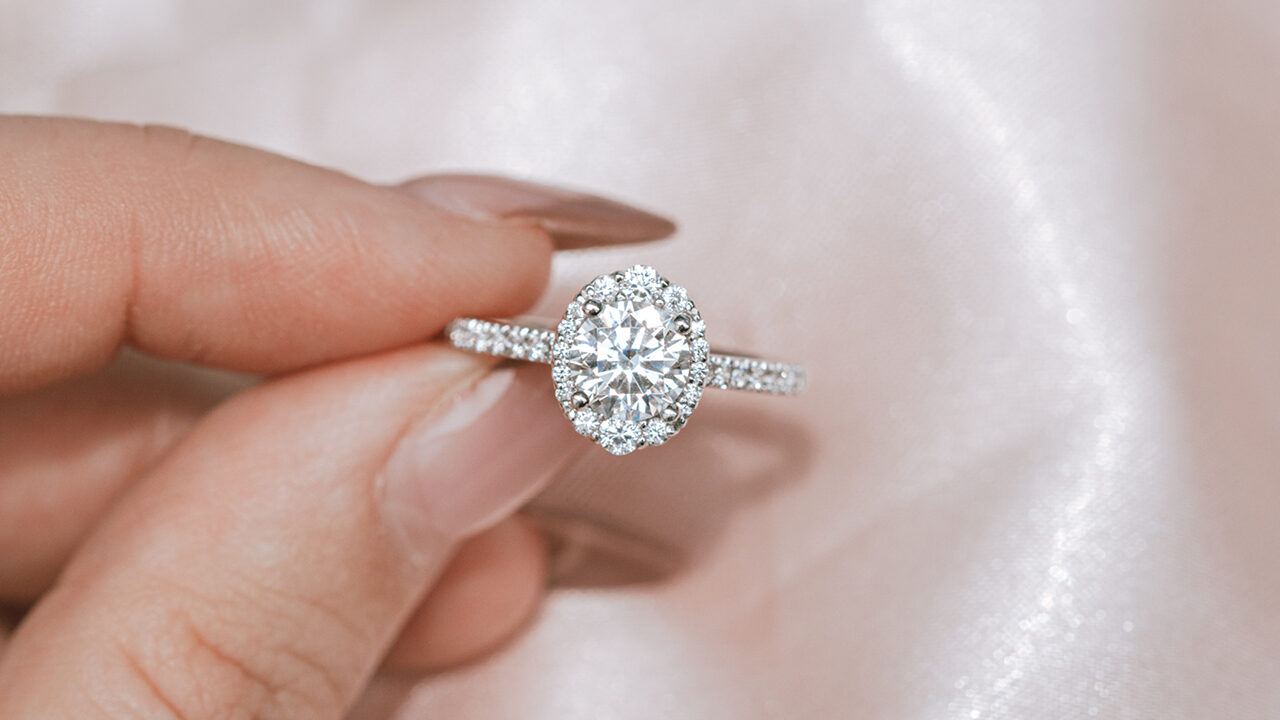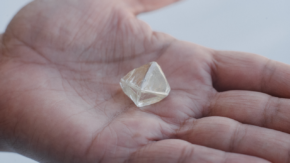Shopping for jewelry is a personal experience that can’t be replicated online, store owners say, and the journey to bringing customers back to brick-and-mortar begins with the supplier.
Shoppers are ready to leave their homes, and not a minute too soon. Customer counts at overall stores surged 43.2% for the week starting May 10, compared with a year earlier, according to mobile-device location data from foot-traffic analytics firm Placer.ai, cited in Fortune.
While that number was still down 5.6% for the same period in 2019, there’s potential good news on the horizon. The National Retail Federation (NRF) adjusted its projections for 2021 in July and now forecasts annual sales will grow between 10.5% and 13.5% versus 2020. Even if online takes a share of that, as it inevitably will, the expectation is that in-store shopping is on its way back.
“At the end of the day, the in-store experience is still the most important part of a jewelry-store experience for consumers,” says Andrew Rickard, vice president of operations at RDI, which provides memo and stock orders for independent jewelers in the US. “Consumers shop online, but online doesn’t tell the entire story.”
FACE-TO-FACE STILL RULES
After over a year of being stuck at home, customers are eager to get back to shopping in person, analysts say. “We’re starting to see a shift in people wanting to get away from online,” says Ellen Fruchtman, president of Toledo, Ohio-based Fruchtman Marketing, which specializes in marketing to the jewelry industry. “They’re browsing online but yearning for a one-on-one experience. All physical stores are doing well. People are ready to get their masks off and go shopping. Restaurants are crazy. People can’t wait to get out. If I’m looking to buy something of substance, I want to do that in person.”
Kathy Cary, diamond buyer at Skeie’s Jewelers in Eugene, Oregon, says most of her customers prefer brick-and-mortar to online. “They probably still shop over 90% instore,” she says. “It’s because we don’t sell ‘things.’ We’re here to create an experience, and you can’t have a bridal experience online. You can’t have a self-purchase online. Customers come in to see me. They want to know what I think, and they want to spend time with me. They want an in-store experience with me, and you can’t do that digitally.”
The in-store experience is also an important tool for highlighting nuance and detail that digital doesn’t capture. “Truly fine jewelry can’t be compared through pictures and videos,” says Rich Goldberg, third-generation owner of Safian & Rudolph Jewelers in Philadelphia, Pennsylvania, and current president of Philadelphia’s Jeweler’s Row District. “In person, we can educate and explain the differences and show them. Jewelry is such a tangible product that people want to see and experience.”
Store owners say creating an instore experience compelling enough to bring shoppers back requires partnering with suppliers who understand retailer needs. For Cary, one of the most important aspects is making sure her suppliers are reliable and reachable. “I need to have a diamond supplier who’s going to pick up the phone when I call, and find what I need, and who is going to remember me,” she says. “That’s the experience that I need from my diamond supplier.”
GOING THE EXTRA MILE
Suppliers should also provide educational support for their products. “When describing a product, we’re not just giving a basic explanation but also explaining how to sell the item,” says Rickard. “Not every product we have is branded — we do carry generic product — but we have to make sure that what we provide means they have something unique to offer their clients.”
Even small brands should consider how they can help retailers explain unique selling points. “Designers are also suppliers, so I need to have designers with a personality,” says Cary. “I’m not selling a pair of earrings. I’m selling how it’s going to go with your wardrobe. Or, for example, I’m selling a designer who funds breast health for indigent women. Customers will buy that designer because they connect with me, and I connect with them because of things like that.”
Customers come in
to see me. They want
to know what I think,
and they want to
spend time with me.
It’s also important, though, that suppliers understand how much information a store wants — or how little. “More of my manufacturers are trying to provide [marketing] content, and that makes it easier for us to show product online,” says Goldberg. “Half to three-quarters of my manufacturers or lines try to do that. They try to train our employees or send a look guide. But I limit it, to some extent. In chain stores, there’s a need to have all your employees saying the same thing and spouting prewritten lines. But in my business, which has been here for 70 years, we try very hard not to sell in the clichéd ways. I like trying to say what’s unique about Safian & Rudolph, and not something generic.”
PERSONALIZING EXPERIENCES
Retailers say that personalizing their customer experiences begins with suppliers that personalize their wholesale experiences.
“I wish [suppliers] would personalize themselves, and personalize their stuff more,” says Cary. “I had one designer come to our store. They had a party and a lot of people got to meet them. And that helped. Because then customers can buy from a person, not a brand.”
As customization gains traction in jewelry retail, store owners also say they need suppliers who can pivot to match their clients’ needs.
“The experience we give, we try and make it special and unique,” says Goldberg. “I think that’s where manufacturers can help out. I can be showing three or four rings from a manufacturer, or I’m showing a halo, and instead of a cushion she wants a pear-shaped, and she likes a five-point instead of a two-point. Eight out of 10 orders have some level of customization. So it’s very helpful when I can reach out to my manufacturer and they can turn around an updated CAD [computer aided design] image to me in 24 hours. That’s giving the customer what they want.”
On the supplier side, that level of support requires staying up to date with both clients and staff.
“We’re training our own associates so that they’re not just order takers,” says Rickard. “They understand how to ask proper questions and bridge the distance between us and the end consumers. What would I want to know? How would I try to solve the problem? Our job is to try and find a solution.”
A Jewelry Retailer’s Unique Take on Nurturing Customers
By Robert F. Moeller II
When customers walk in, our goal isn’t just to sell. It’s to inform and excite. So I’m not going to tell customers what they want to hear. I’m going to tell them what they need to know. And then I deliver on my promise, whatever that is. Deliver on the due date. Call them when you say you will.
It’s basic stuff, but it’s easy to underestimate the importance of it, because there can’t be loyalty without trust.
Loyalty is when people say, “I trust you, and that’s why I’m here.” Every time you don’t deliver, that’s a little ding on the trust meter.
For example, we decided, on all repairs, to offer delivery. That’s one way we go above and beyond. And we do so much service. That’s been the backbone of our business. Repair is more complicated than a sale, but if you do it well, customers notice. In sales, we offer free appraisals, and we send thank you notes for all sales and repairs.
The beginning and the end of it is connecting on a personal level. You entertain clients and take clients out to dinner, go golfing. We send them gift certificates for referrals and thank them for referring. And we have very little turnover on our sales staff, so customers are seeing the same people.
CREATING A STORY
When new products arrive in-store, Fruchtman says the onus should be on the suppliers to make sure retailers have everything they need to understand and sell the items. “The training needs to come from the supplier,” she says. “They’re the ones who know their product best.
They have to supply great training, great presentation, and it wouldn’t hurt if some of the suppliers came up with promotional ideas and concepts. The great suppliers, not the generic ones, literally walk you through the entire process and provide you with great training, great photography, and great ideas. They should be a jeweler’s partner. Not just provide product for the cases.”
That means suppliers have to keep their knowledge base as fresh as their inventories. “We’re constantly creating new content,” says Rickard. “That content is delivered in a multitude of different ways. Sometimes it’s delivered through our website. Sometimes it’s lists we provide to jewelers of inventory, or more content around the diamond like images, videos.
“For us, staying cutting edge means you’re constantly evolving and wanting to provide information that stays ahead of our competitors. And the marketing team works tirelessly to provide social-media resources and print ads and billboards, and audio and video. The list never stops.”
The great suppliers
provide you with
great training, great
photography, and
great ideas.
Yet at the end of the day, retailers say it’s their store they most want to put front and center with customers. “We have an entire department of marketing, and they use a lot of stock stuff [from suppliers] on Instagram on slow days,” says Cary. “But we always have at the back of our minds the Skeie’s brand.”
Cary is most interested in advancing her store’s personality, not the product story, she points out. “I rarely tell a story about a diamond, except for [De Beers’] Forevermark [diamonds],” she says. “And a lot of diamonds have no story, and that’s OK, because I’m telling the Skeie’s story, that this was hand chosen by me.
“The story of diamonds has to come from me, the gemologist, and go to the salesperson, then to the client. I don’t think the people I buy mass diamonds from can tell me much. I’m a gemologist for 40 years. They can’t share much with me that I don’t already know.”
Goldberg says that product branding isn’t as critical to him as making personal customer connections between clients and his store. “Ten years ago, it seemed so important to me to try and get more big brand names in here,” he says. “But now, [for] the average millennial, and the next generation, it’s not about having the brand name everyone has. It’s about creating something unique and individual.”
In his showroom, Goldberg creates his own inventory. “That’s my sweet spot. And that’s where we find excitement from the customer. So as much as I wish a manufacturer could help, I don’t need that help, or want that help,” he says. “And I think the average 20- or 30-something rolls their eyes at those corporate dude stories anyway. It’s more important to just be real.”
Image: RDI Diamonds




